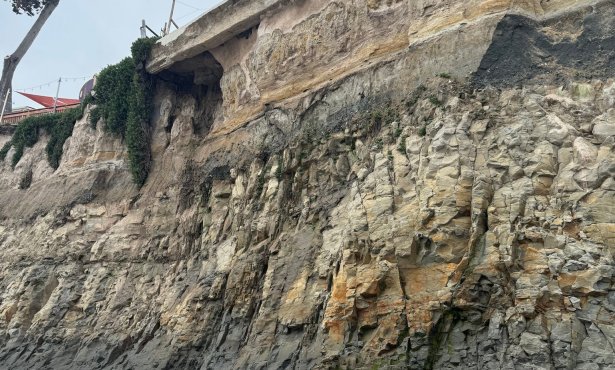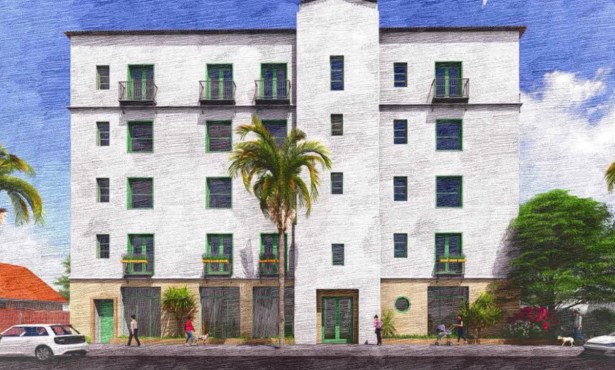Q: What is the history of the Rochin adobe on Santa Barbara Street?
by Michael Redmon
Q: What is the history of the Rochin adobe on Santa Barbara
Street? -Jo Lindros
This modest adobe, sheathed in clapboard of pinkish hue that
sits at 820 Santa Barbara Street is among the oldest in the city.
The families who have lived here through decades have lineages that
stretch back to the earliest days of Santa Barbara.
The adobe got its name from José María Rochin who purchased a
plot of land located in the former parade grounds of the Royal
Presidio from the City in 1856. Rochin’s wife, Lorenza, was a
descendant of the first presidio comandante here; the
couple had moved to Santa Barbara in 1848. Rochin paid $30 for his
land and used adobe bricks from ruins of the old presidio to build
a three-room house. The Rochins did have children, but raised as
one of their own a niece, Soledad Ordaz. In a 1954 interview,
Soledad reminisced about her childhood, spent not only in Santa
Barbara but on a number of ranches where her father raised saddle
horses. The family lived for a time at Mission La Purísima near
Lompoc, much of which was in ruins and had been abandoned. The
Rochins willed their Santa Barbara adobe to Soledad.
In 1890, Soledad married Francisco Leon Birabent, also a distant
descendant of José Francisco Ortega, the first comandante
of the Santa Barbara presidio. Birabent’s father had emigrated from
France in 1860 and had worked as a ranch hand in Santa Barbara
County. The Birabents also raised cattle for a time in the Los
Alamos area until moving to Santa Barbara in 1895. It was right
around this time that the adobe was covered in clapboard to
preserve the house. This was a fairly common practice and had an
aesthetic component; many in the growing Yankee population
preferred the look of wood to adobe. The Birabents eventually
turned the adobe into a rental unit, while they lived above their
grocery store at 523 State Street.
The Birabents’ daughter, Leontine, inherited the adobe from her
parents. Born in 1892, she became an accomplished pianist and
organist, often serving in the latter capacity for the
Congregational Church and for All Saints-by-the-Sea Episcopal
Church in Montecito. She also conducted an orchestra for a time at
the palatial Potter Hotel off West Beach. She became a film editor
for Flying A Studios in 1913 and, two years later, married Robert
Phelan, who was a cameraman there. The couple moved to Los Angeles
in 1916, then returned eight years later to set up permanent
housekeeping in the adobe.
The couple turned their home into a museum of sorts. Here was
housed Robert’s collection of Chumash artifacts, containing
hundreds of items. Two trunks reportedly had been used by the
Ortegas to safeguard possessions when privateer Hipolyte Bouchard
sacked the family’s Refugio ranch in 1818. Memorabilia of the
couple’s days in the early movie industry also graced the house as
did works by artists John Sykes and Ed Borein, the latter a good
friend of Robert’s. The couple was involved in any number of
community activities, especially the Old Spanish Days Fiesta for
many years. Robert was also a charter member of the fraternal
riding organization, Rancheros Visitadores.
After Robert’s death in 1966, Leontine continued to live in the
adobe, periodically opening up her home to allow schoolchildren to
view its treasures. Her mother had lived to be 96; Leontine
demonstrated even more remarkable longevity, passing away just five
months short of her 102nd birthday in 1994. Robert’s Flying A movie
camera is now displayed at the Santa Barbara Historical Museum.
The Santa Barbara Trust for Historic Preservation purchased the
adobe early in 1996 and presently it is used by the Anacapa School
which is located next door to the adobe.
Michael Redmon, director of research at the
Santa Barbara Historical Society, will answer your questions about
Santa Barbara’s history. Write him c/o The Independent,
122 W. Figueroa St., S.B., CA 93101.



